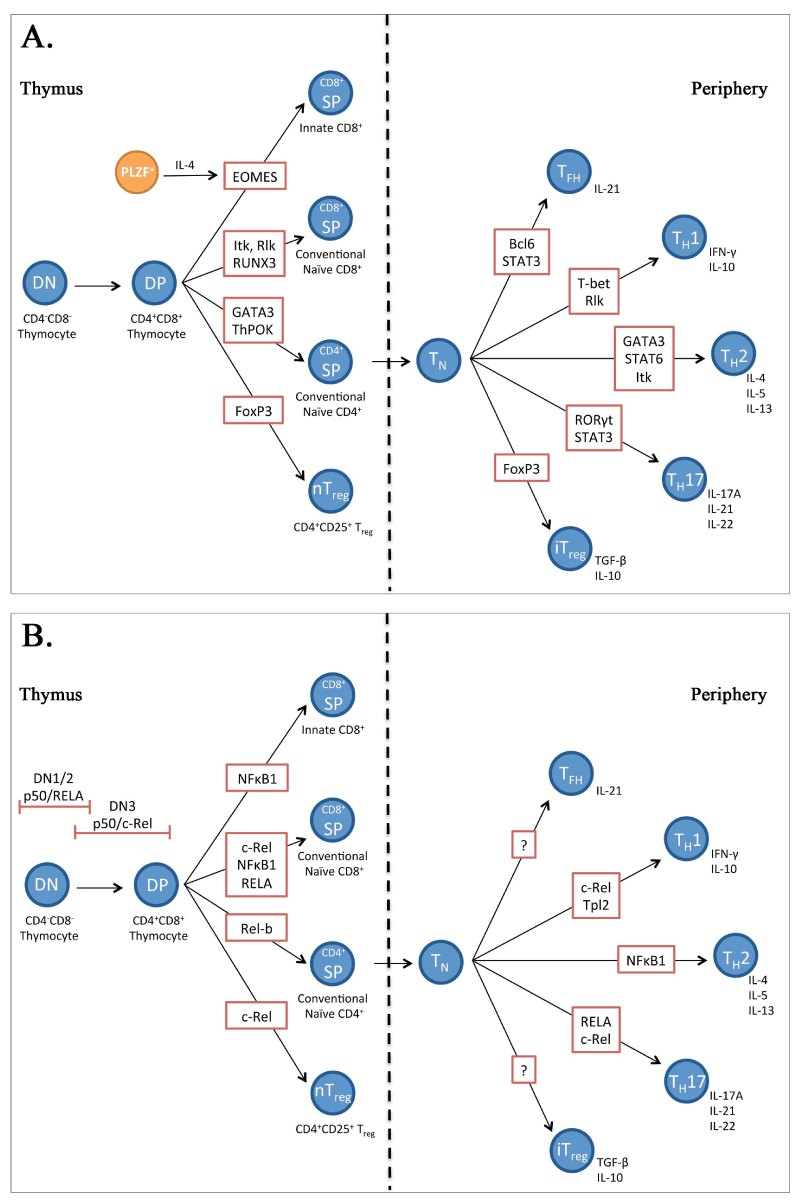
Shown is a schematic representation of T cell development along multiple lineages within the thymus (left) and the polarization of distinct T cell subsets in the periphery (right). (A) Highlighted are some of the key transcription factors that direct T cell development along the indicated lineages in the thymus, and promote the phenotype of polarized T helper lineages in the periphery. (B) Shown are the NFκB subunits (and related proteins) for which a cell-intrinsic role in development, differentiation or function has been described. Within the thymus, the CD4-CD8- DN thymocytes develop into CD4+CD8+ DP thymocytes. Positive selection gives rise to a number of thymocyte lineages, including the CD4+ SP, CD8+ SP and nTreg cells. In response to exogenous IL-4 produced by PLZF+ cells, a further innate memory-like CD8+ T cell lineage arises in some mutant and wild-type mouse models. In the periphery, naïve CD4+ T lymphocytes can adopt a number of functional phenotypes including the TFH, TH1, TH2, TH17 and iTreg cells, each producing a distinct cytokine signature. See text for further details.